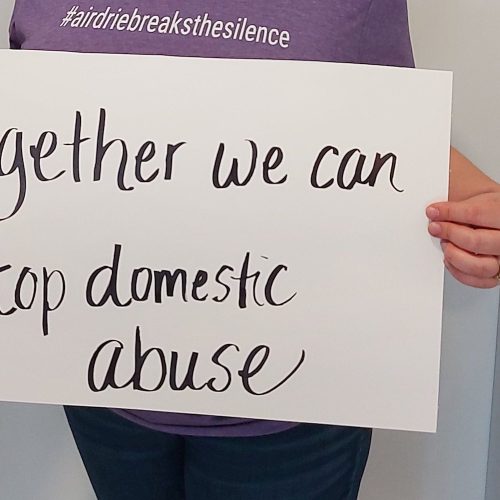Council approved an operating budget of $173,878,950 and a capital budget of $104,014,000 for 2022. The overall effect to the average residential homeowner with an assessed value of $385,000 is projected to be $163.91 annually or $13.66 monthly.
“Balancing what the community needs with required revenue is tough and especially so when considering COVID-19 impacts on the City and community,” said Mayor Peter Brown. “We decided to use $1.0 million from the projected surplus of 2021 to offset the required revenue for 2022. This reduces the tax burden for next year while allowing us to continue forward with 2022 budget plans.”
“We project that COVID-19 related costs and lost revenue will impact City operations into the first half of 2022, with slow recovery occurring in the second half,” said City Manager, Paul Schulz. “As a community that continues to grow, residents and businesses are asking for more services, infrastructure and amenities than ever before. This Council approved budget takes a step towards the City’s need for reserves and revenue, while providing households and businesses great value for their tax dollar.”
“First of all, the 2022 Budget allocates financial resources to support management and recovery from COVID-19,” said Lucy Wiwcharuk, Director of Corporate Services and CFO. “Secondly, this budget focuses on supporting current and future community needs and new services and amenities that will require a revenue increase in 2022.”
COVID-19 related lost revenue and additional expenses created an almost $2.0 million gap in the 2022 budget. In 2020, the City received $7.4 million from the Province of Alberta and Government of Canada as Municipal Operating Support Transfer (MOST) funds to cover the losses due to the pandemic from April 1, 2020 to March 31, 2021. No additional operational relief funds from other orders of government are expected for 2022. The 2022 budget addresses a continuing operating deficit, newly endorsed City services and future City services.
10.7 new full-time equivalents (FTE) were approved in the 2022 budget. 1.0 FTE is included in the 2022 budget for asset management. This will help ensure that the City’s almost $800 million of assets can be maximized throughout their lifetime and do not fail at importune times. Other areas where additional staff resources are planned include, a cultural specialist and special events positions in Community Development and additional Parks, Building Operations, Engineering, Water Services, Communications, Human Resources, and IT Infrastructure Services staff. New staff will help progress Council Strategy and maintain City services.
The 40th Avenue Interchange to QEII and the acquisition of land for a second regional park in 2021 will account for $692,600 and $623,300 respectively of tax-supported debenture funding in the 2022 budget. The 40th Avenue Interchange to QEII will bring value to residents and businesses by reducing traffic congestion along the City’s existing arterial corridors, including access to QEII and provide critical transportation infrastructure to support development of future lands.
The 2022 budget will raise an additional $2,771,843 in tax revenue:
| Percentage | Tax revenue | |
|---|---|---|
| Municipal Services: | ||
| COVID-19 net costs | 3.05% | $1,970,470 |
| Protective services | 2.09% | $1,351,080 |
| 40th Avenue Interchange debt | 1.07% | $692,600 |
| Regional park land debt | 0.97% | $623,300 |
| Newly Council endorsed services | 0.34% | $220,000 |
| Municipal services (not including protective services) | (1.24)% | $(805,137) |
| Fiscal sustainability: | ||
| Tax stabilization, capital, and insurance needs | 2.62% | $1,690,000 |
| Total | $5,742,313 | |
| Funding: | ||
| Draw from General Operating Reserve
(allocated from 2021 projected surplus) |
(1.55)% | $(1,000,000) |
| Draw from General Operating Reserve
(offset COVID-19 effects) |
(3.05)% | $(1,970,470) |
Total tax revenue increase |
4.30% |
$2,771,843 |
Year over year comparison based on an average residential household annual cost:
| 2021 | 2022 | Change | |
|---|---|---|---|
| Municipal tax | $1,866 | $1,946 | $80 |
| Utility costs | $1,577 | $1,661 | $84 |
| Net change | $164 | ||
The City has three main sources of revenue: user fees and charges, franchise fees and tax revenue. Franchise fee revenue is designed so that those who benefit from the services that utility companies provide contribute their fair share. Utility fees cover the cost of water, sewer, and waste management. Administration proposed not to implement CPI increases for 2022 in support of pandemic recovery which was approved by Council.
Protective services
The cost of protective services (Police, Fire, Municipal Enforcement and Emergency Management) – year over year increase is $1.35 million, which is equivalent to a 2.09 per cent tax revenue increase. This increase is mainly related to Police and includes the addition of two new RCMP members for 2022, along with the recently announced collective bargaining agreement that provides a salary increase to RCMP members.
Fiscal sustainability
- Tax stabilization
$645,000 (equivalent to one per cent tax increase) has been allocated in the 2022 budget for future City services including an additional New Library and Multi-use Facility, the City’s Fourth Fire Hall, and Regional Recreation Centre. These funds will be used to keep tax rate increases stable in future years when operating costs get added into the operating budget. - Capital Reserve
In 2021, Council began designating specific tax funds to address the City’s infrastructure deficit. Included in the 2022 Council approved budget is a $645,000 increase (equivalent to a one per cent tax increase). - Insurance and Risk Management Reserve
All municipalities are faced with increased insurance costs; the City is experiencing a 25 per cent increase (including property insurance, auto insurance etc.). The 2022 budget includes $400,000 to begin building a self-insurance program to reduce budget impacts caused by volatility in the insurance industry.
Budget process
Each year, City administration prepares a three-year operating budget and a ten-year capital budget driven by Council’s strategic priorities and business plan goals. During annual budget deliberations, the Council Budget Committee reviews the first year of each budget in detail and reviews subsequent years for possible new services, facilities, or other pressures on the horizon. The current year of each budget is adopted by Council, with subsequent years accepted for information.
The City uses a variety of methods to educate residents on the budgeting process. Complete budget information and budget presentations are available at www.airdrie.ca/budget
Daily cost of City services:
With Airdrie’s projected growth, the City will be one of the three top mid-sized cities with a forecast population of over 100,000 in a short eight years, with needs more aligned with cities such as Lethbridge and Red Deer. With this, services to the community will continue to expand and tax revenue per household will also increase. This will be needed to meet the needs of a community of this size.
-30-
Media contact:
Erin Murray
Communications Advisor
403.948.8800 ext. 8243





